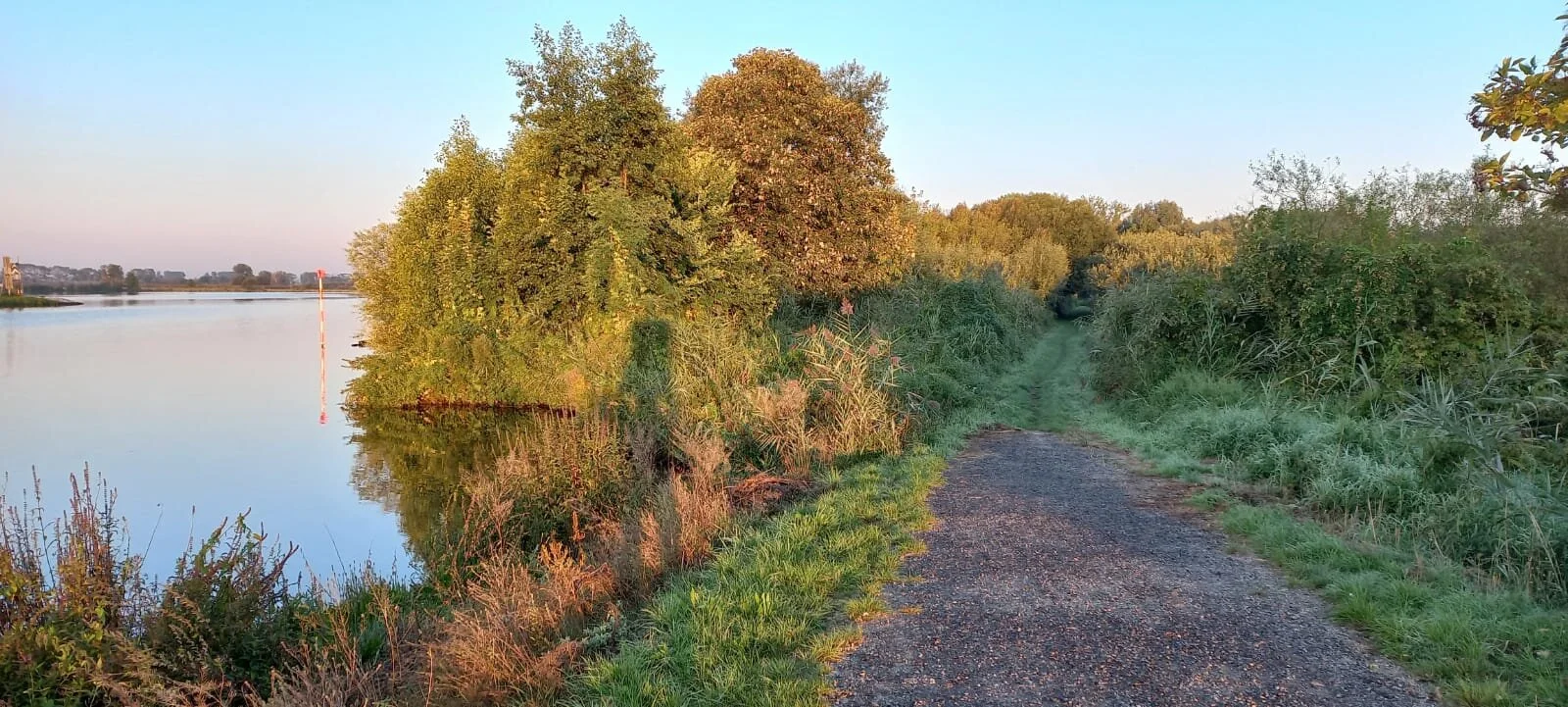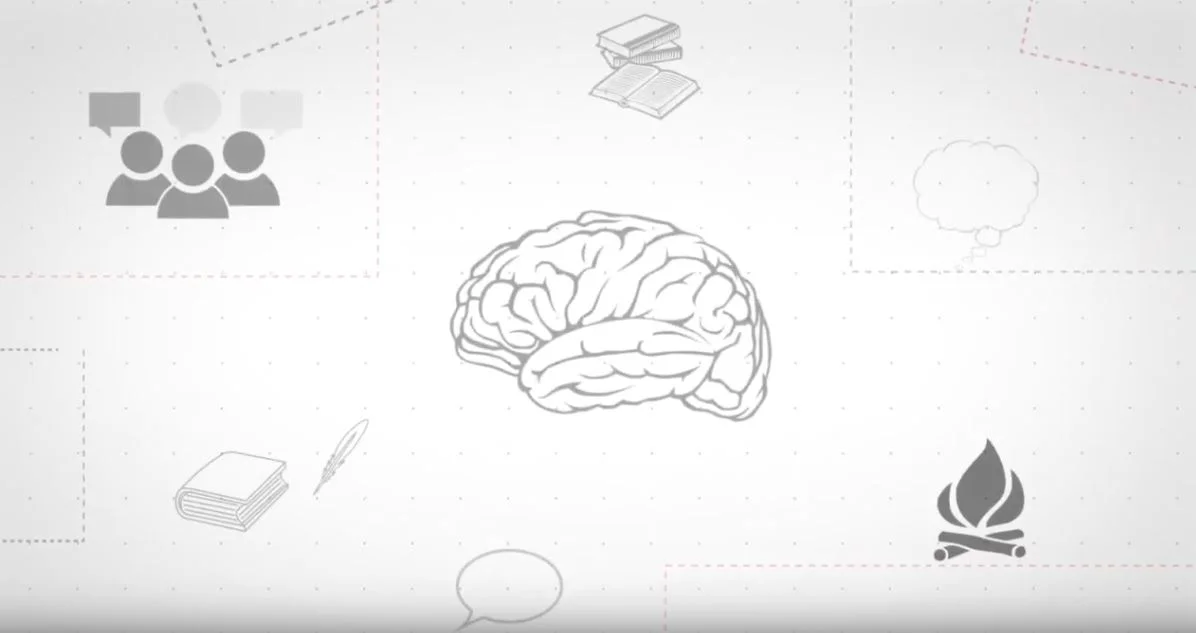Harvesting and reflection of the session Rehumanizing work in BST 2019: Storycamp Lingenau.
Permission to be human
I am grateful to have found a home in this community of storytellers, storylisteners, storyworkers, storycollectors, storyplayers and storybeings. I came to Storycamp Lingenau with my mind, heart, hands and eyes wide open. Motherhood has taught me not to get too attached to my expectations – and so all that was left was a childlike curiosity. In previous years in the BST 2017 and BST 2018 I have already recognized that this is my tribe. I belong here. That much was clear.
But my »I« had expanded. Both my baby daughter and my mother came along to Lingenau – and I wasn't at all sure how that would go. There was no schedule, no clarity, no plan. Just deep trust that if I belong here, we will make space for them, too. I shed my first tear on Day 1. I asked Wolfgang if my mother and daughter can join us for our common dinners, and he agreed immediately. »We can also sit somewhere separate if reservations have been made and the tables are set ...« I added apologetically. »Are you crazy?« he exclaimed. The idea of them not being fully welcome in our community seemed completely absurd to him – and that touched me. There was no question: there is space in this wonderful circus for me as a whole; not just my professional mind and contribution, but also me as a mother, as a daughter, as a human being.
How often does it happen that a business conference offers the opportunity to accept humans as they are? To talk about not having been able to sleep at night and jumping into the river at 6 am? To dance through the village? To stay true to our bodies, hearts and souls while tending to our minds? Where we can show up as we are, without the need to make an impression, where our story is appreciated and received openly, where we can be held?
How did we end up in a place where such experiences are so painfully rare? How come in a world inhabited by human beings (and human becomings), we have let ourselves be redefined as human doings?
More questions than answers
I proposed a session in the first day on re-humanizing work. I am called by transforming our workplaces from places that so often slowly drain our life out of us into places of creation where we can flourish and feel truly alive. In the session, we came up with more questions than answers.
What is a »human« organization? What makes a culture human? What do we need from the organization to be truly and fully ourselves? What makes a safe space?
What do we need to feel truly ourselves? How do we avoid living up to a different set of values as soon as we put our business attire on? How do we stay true to our values in an environment that feels hostile? How can an organization support personal growth and development of each individual, knowing we have different needs and interests?
What stands in our way? How can an organization be human if it needs to be pragmatic? How can organizations profit from personal fulfillment of employees? How do we »sell« the idea of »human work« to the decision makers, if profit is the main motivation? What are we afraid of? Who sets the rules of who we're supposed to be?
Is there a line? Is there such a thing as »too human«? How do we keep boundaries in a more human environment? And if we manage to create a safe container while we're working with the teams, what happens when we're gone and they drift back into old patterns?
More questions than answers; a harvest from the session.
And what role does story play in all of this?
Dehumanization is destoryfication
If humans are storytelling animals, it seems obvious that a human organization would deal with stories the humans bring into it. Brené Brown says »Stories are data with a soul.« And people without stories are just data – numbers. Re-humanization is the process that reverses the damage done by dehumanization. Dehumanization means that we see and treat people as something other than human: numbers, problems, machines, working animals, ...
Even the term we use for the people who are supposed to care for the employees – human resources management – invites dehumanization. Using people as a resource, thinking of them as a resource, is a powerful metaphor. Resources are precious, but they are something we can use up, exploit, run out of, consume. It's something that is valuable because a benefit is produced from it. »Human resources management« is a story in which humans are not a protagonist. In a human organization, humans would be not only protagonists of the story, but also its authors. Their value lies in the stories they create and live, and their worthiness is a given.
Dehumanization practices at work strip people of their story. We are expected to behave like machines: highly effective, unquestionably obedient, unbiased by context and emotion, indefatigable, infallible. Anything that is not contributing to the benefits we are supposed to produce, is considered a flaw or a disturbance. This is the sea we swim in. Even though emotional intelligence, life-long learning, work-life balance and other topics that imply that we are nevertheless not machines, are becoming buzzwords, the underlying hypothesis stays – the fact that humans are human is a problem to be solved not a treasure to be sought.
The treasure of humanity
Humans are not perfect. We live in stories, and the stories do often get in the way of getting things done. And yet, stripped of stories we lose our meaning. Meaningless work, doing things that are not aligned with out values, being treated as if we don't matter – all these things contribute to burnout, sickness and stress. We all need to feel valued and worthy to be able to contribute in a meaningful way. Future work skills are the competencies computers do not have – they are about communication, sense-making, understanding and co-creating stories, collaboration, trust. Only humans can read between the lines and capture meaning from data. We need our humanity to navigate the complex world we live in. We did not need to be persuaded; we know our humanity is essential to our most treasured contributions. We only spent a short time talking about why we need our organizations to be more human: to enhance engagement through “Glűck und Sinn”, to foster cooperation and trust, to move on from failure better, to reduce sickness, stress, absenteeism and fluctuation, to support natural human creativity, to free us from roles and expectations and make space for change, growth and innovation … So we know only humans can do these things; and only if they can tap into their human potential. But what is human? When do we feel human? When do we feel alive?
What is human
After much thought and a little bit of research, I believe two general practices come up at work that dehumanize us – denying our needs and partialization. Whenever our basic human needs are denied, that dehumanizes us. Whenever any of our inseparable parts needs to stay out of the picture, that dehumanizes us.
Firstly, to feel human, we need to have our needs met. There is a multiplicity of human needs theories, but most of them agree on the basics. We need to tend to our bodies with enough food, drink and rest. We need to be and feel safe and secure, both physically (our bodies will not be harmed) and emotionally (our hearts will not be harmed). We need relationships, to feel like we belong and are loved, appreciated and connected to other humans. We need to feel we are competent, successful at what we do and that we are growing, learning and getting better. We need to feel we have some autonomy and control over our lives and our decisions. And finally, we need to feel like we are contributing something, that we are true to what we believe in, that we are a part of something bigger than us. At work, it is common that even the most basic needs are put on a tight schedule, if not denied completely; relationships are shallow and transactional; our competence goes unacknowledged; our autonomy is severely limited; and we don't fully see the sense of what we do. All of that dehumanizes us.
And secondly, to feel human, we need to be acknowledged as a whole. Not only our minds come to work, but so do our bodies, our hearts and our souls. Our identities are informed by what we think and do (which are usually welcome in business environments), and also by what we feel (sensations and emotions) and who or what we connect to (our environment, context or system we come from and also our spiritual beliefs and experiences). At work, our minds are welcome, and some functions of our body – the ones that can produce what our employer needs from us. All the rest is often seen as superfluous or even problematic. Integration and wholesomeness also means space for the polarities, or better, shades of gray between the good and the bad, the light and the dark, the done and the developing, the achievements and the failures. In short, it means no part of us needs to stay hidden when we enter the office (because we all know that checking it at the door is not a real option).
We all lose, and yet ...
Let us not forget that organizations are made out of humans. All of us are human, from the top management in their suits and ties (and hopefully more and more dresses and skirts, too) to the workers in their dirty overalls. And all of us are losing in the system which does not let our whole selves to show up at work. The leaders are also not allowed to be whole – to show vulnerability, to make mistakes, to feel. It might be that more of their needs are met, but can they truly be alive in their role? Can they bring the multiplicity of their stories into the workplace? My guess is – no, most probably not. They may live a narrative of a successful leader, but that is often heavily influenced by the ocean of taken-for-granted beliefs than make the story thin and one-dimensional[1].
So how does this happen? In another session (the one in which we realized we want to dance with the Earth not all over it) we realized that a system persist because a system is stronger than an individual. Yet, a collective is stronger than the system. A collective can form a new narrative and re-author the future. It can transform a system through writing and living a better story. But we cannot create a collective if we don't have permission to show up, be seen and connect. So we're in a vicious cycle.
What are we afraid of?
But why? Why can't we just be human with one another, share our stories, realize we're all the same and better together and just work from there?
Well, it's not that simple. We can never know what it is like to be the other person. We cannot feel their pain or their joy. So it is easy to consider them separate, even lesser than we are. Emphatic story-listening is as close as we get to understanding what it feels like to be another human being. But empathy is always a choice, and it's a brave and vulnerable choice. We need to allow ourselves to open up to be able to do that.
Pandora’s box. From clipart-library.com.
Both dehumanizing practices that I described above have an underlying topic ... Humans are essentially vulnerable. We are not bulletproof, not all of our parts are great and solid, we are quite easily hurt and we are high maintenance beings. The organizations realize that – and tried to outsmart vulnerability. Engineer it out of the process to eliminate human error. Our brain was developed in a time when vulnerability was deadly and it still didn't quite get used to the idea that not everything and everyone in the world is a danger. So I'm guessing what we're afraid of is – death.
Not literally anymore, obviously, but our brain doesn't know that! The stories our brain is mainly invested in answer the questions »Who is a friend, who is an enemy, who is food and who am I food for?«. Lately in our society we come down to »What should we fear?« and »Who should we blame?«[2]. These have such an urgency that we cannot afford to form an alternative narrative until we feel safe enough. We fear our vulnerability and the vulnerability of others will endanger us, like it did when we still lived in caves. I remember being in a meeting with a client and suggesting a story-sharing exercise, and the management froze. »But what if they cry?« That was their concern. That a team member might cry, and then all shit would break loose and the Pandora's box would open and who knows might come out?!
The answer to the title question is: we don't know what we're afraid of – and that makes it so much scarier!
Circle of safety
Human organizations should offer us a circle of safety[3]. A circle of safety means that whatever happens, we will take care of each other and we will be taken care of. If we have a safety net, we can try out almost anything. Like my baby daughter wandered around and explored the world of our storycamp, because she knew that mommy is somewhere around, the other people are safe, and she can always come back. It's the same with us. Courage is a function of groups. We need to form safe spaces for the people at work where they can share their stories so that they can explore the multiplicity of who they are and what they can contribute.
Inspired by Simon Sinek, Leaders eat last. Authors own image.
A lot of our conversation in the session revolved around that. How do we do it? How do we as facilitators create microspaces that enable connections and invite alternative narratives and deeper, fuller, wholehearted stories? And what happens when we leave? How do we offer these spaces on a structural macro level in organizations? And bigger, how to we make organizations as a whole a safe space to be human?
We gathered a few ideas: creating shared rituals, where people come together regularly; offer common spaces where people can meet; in research and reports use the language of the people; foster playfulness and humor; normalize questioning and checking assumptions; introduce “check-in” in the beginning of a meeting or a working day; change the questions we ask to invite alternative narratives (i. e. “What excites you today?” instead of “How are you today?”) … These are just bits and pieces, drops of ideas that we shared with each other. It remains a field to explore - and yet one thing became clear to us. Story-sharing can become key in this practices.
Even the smallest place where one can feel safe can offer a huge relief. Having one relationship at work in which one can put down the armor and share their story with an nonjudgemental, deeply listening other, might be all one needs to survive in an otherwise hostile environment.
But we as story-workers want to dream bigger. We want to revolutionize work. Create a better world and better lives for people by eliminating the need for armor in places where we spend about a half of our awake time. By creating a new paradigm that might some day grow into the dominant narrative – a human organization.
The dream – a framework of a rehumanized organization
Surprisingly, the 120 minutes of the session did not suffice to solve the problem. Unfortunately, despite our heartfelt discussion and the multiplicity of experience we brought into it, we did not save humanity just yet. But we have started dreaming, and I hope we will continue.
What are the elements of our new story? What is the future of organizations, of leadership, of workers? How can we model a human organization, so it can be operationalized, measured, observed, taught, learned and practiced? We are not quite sure yet, but a spark has landed. We are not the only people carrying these questions. This is how one spirals out of a vicious cycle – by infecting more and more people with the new story. The system might be more powerful than an individual, but the collective is always more powerful than the system.
And so our hopes are high, and we extend an invitation. If each of us just held the space for one person at work, in which their needs can be met and their whole self seen... Just one. One can never know, what story might spark a revolution.
[1] The vocabulary of »thin story« and the ocean of taken for granted belief I borrow from Chené Swart, Re-authoring the world.
[2] The questions come up in Brené Brown's work around vulnerability and courage; i.e. Daring Greatly.
[3] See Simon Sinek, Leaders eat last.
























